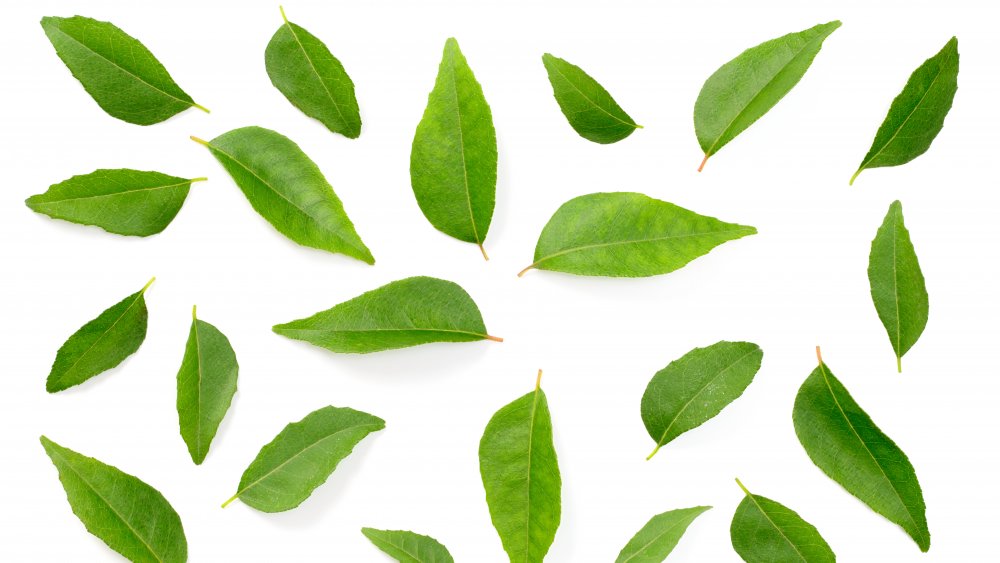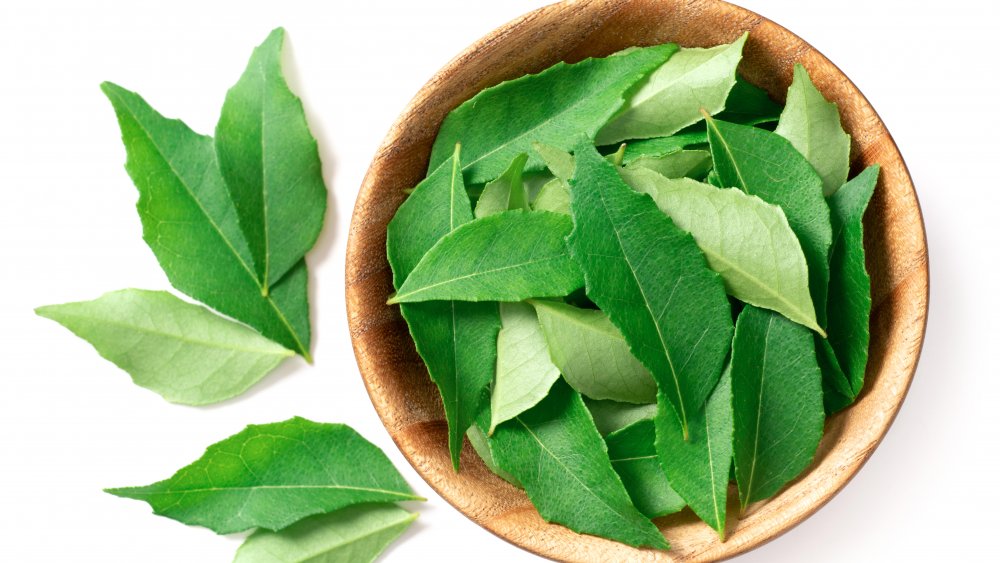What Do Curry Leaves Taste Like?
Curry leaves grow on trees that are a member of the citrus family, and are native to the Indian subcontinent (via Kerala). They have a somewhat bitter and pungent flavor and are used in many Indian dishes. If you're familiar with Indian cuisine, you may find that their taste is similar to asafoetida, which is a powder made from a dried herb that is also used in many Indian foods (via Serious Eats).
When they're plucked off the tree, they are a vibrant, bright green and can be used in their fresh form — or you can dry them and they will keep for up to six months if they're kept in the refrigerator (via Subbu Cooks). It's also important to note that they are completely different from curry powder, which is made up of spices such as coriander, cumin, and turmeric, so it's best not to confuse them.
How to use the taste of curry leaves in dishes
Because they are a member of the citrus family, you might find that the taste is reminiscent of the leaves of other citrus plants, such as lemon leaves or kaffir lime leaves (via Healthline). Others compare them to the taste of lemongrass or anise, and still others get herbal hints from them, like basil.
They are extremely aromatic and do lend a very powerful smell and taste to food, so it is important to use them sparingly (via Masterclass). Since they are an aromatic such as a bay leaf, you wouldn't want to take a big bite of one if you find it in a dish, as they're only used for flavoring the food as a whole (although, unlike with bay leaves, you can eat a curry leaf).
Similar to rolling a lemon to bring out the juice, cooks recommend bruising the leaves by hand or pulverizing them in a mortar and pestle to bring out the flavor. Then, they are fried in either oil or ghee (clarified butter) to lend their taste to the fat in which they've been fried, and afterward to the vegetables and meats that are added to the dish you're preparing.

